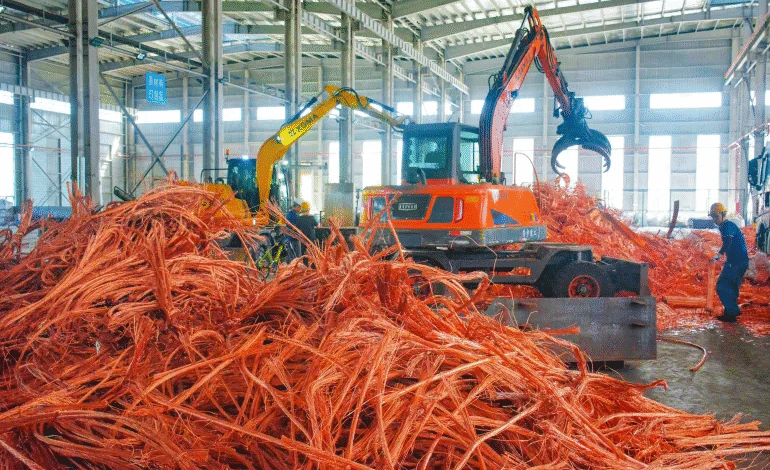Trump’s 50% Copper Tariff Shocks Global Markets, Sparks Supply Chain Concerns

Bloomberg reported that former U.S. President Donald Trump’s decision to impose a 50% tariff on copper imports, effective August 1, has sent shockwaves through global markets. The unexpectedly high rate surpassed most analyst predictions and raised serious questions about the future of global supply chains and the resilience of U.S. manufacturing.
In a statement on his social media platform Truth Social, Trump declared, “America will rebuild a dominant copper industry.”
Surging Prices and Rush to Stockpil
Copper prices in the U.S. have soared since January, when Trump first hinted at potential tariffs. Traders and commodity speculators have capitalized on the widening price gap by shipping hundreds of thousands of tons of copper from lower-cost markets into the United States.
Futures on the New York Mercantile Exchange hit record highs, with premiums over the London Metal Exchange reaching nearly 28%, as importers rushed to bring shipments in before the tariff deadline.
A Strategic Shift: National Security and U.S.-China Competition
The White House has justified the tariff as a national security measure, aimed at correcting unfair trade practices and reducing dependence on foreign sources of critical materials. Copper is essential in power grids, water systems, and military equipment.
Currently, U.S. copper imports come primarily from:
- Chile (38%)
- Canada (28%)
- Mexico (8%)
In February, Trump signed an executive order to investigate whether U.S. reliance on imported copper poses a threat to national security. A second order in March sought to expedite the development of new domestic mining projects.
Major Production Gap and Domestic Challenges
Despite large copper reserves, U.S. production stands at just 850,000 tons per year, while domestic demand reached 1.6 million tons in 2024, according to the U.S. Geological Survey.
Only two copper smelters remain operational—one in Arizona and another in Utah—down from several in the 1990s. Meanwhile, China dominates global copper refining, thanks to decades of aggressive industrial expansion.
Several key U.S. mining projects remain stalled due to regulatory hurdles, including:
- The Resolution Copper Project in Arizona (Rio Tinto & BHP)
- The Twin Metals Project in Minnesota (Antofagasta)
Additionally, the Hayden smelter operated by Grupo Mexico remains idle. If restarted, it could produce 300 million pounds of refined copper annually.
Latin America Emerges as Key Supplier
Bloomberg noted that most copper shipments to the U.S. are now sourced from massive mines in Peru and Chile. Chile’s state-owned giant Codelco confirmed it is ramping up exports to meet growing U.S. demand.
With this shift, the U.S. has become the top destination for global copper exports, overtaking China, which long held the position as the world’s largest consumer.
Looking Ahead: Renewables, Data Centers to Drive Demand
Despite short-term volatility, Bloomberg projects a strong long-term outlook for copper, fueled by the global shift to renewable energy and the construction of data centers—both of which are highly copper-intensive sectors.
Analysts expect global copper demand to rise by 33% over the next decade, as governments and industries intensify efforts to decarbonize energy and transportation systems.
However, Bloomberg warned that the current supply pipeline is insufficient to meet this growth. New copper deposits are becoming harder and more expensive to extract due to lower ore grades and mounting environmental regulations hampering new mining investments.








